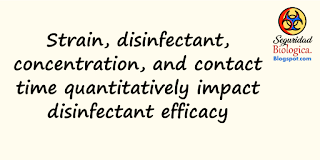Entradas
Mostrando las entradas de febrero, 2019
Fundamental Techniques in Cell Culture
- Obtener vínculo
- Correo electrónico
- Otras apps
Strain, disinfectant, concentration, and contact time quantitatively impact disinfectant efficacy
- Obtener vínculo
- Correo electrónico
- Otras apps
Laboratory management of Crimean-Congo haemorrhagic fever virus infections
- Obtener vínculo
- Correo electrónico
- Otras apps
COMUNICADO AMEXBIO
- Obtener vínculo
- Correo electrónico
- Otras apps
Bactericidal efficacy of ready-to-use disinfectant Towelettes
- Obtener vínculo
- Correo electrónico
- Otras apps
Synthetic viruses - Anything new?
- Obtener vínculo
- Correo electrónico
- Otras apps
Biosafety Guidelines
- Obtener vínculo
- Correo electrónico
- Otras apps
Study of Disinfectant Resistance Genes of Pseudomonas aeruginosa
- Obtener vínculo
- Correo electrónico
- Otras apps
Protective Gloves and Gowns for Antineoplastic drugs
- Obtener vínculo
- Correo electrónico
- Otras apps
Sustained Antimicrobial Activity of a Novel Disinfectant Against Healthcare Pathogens
- Obtener vínculo
- Correo electrónico
- Otras apps










